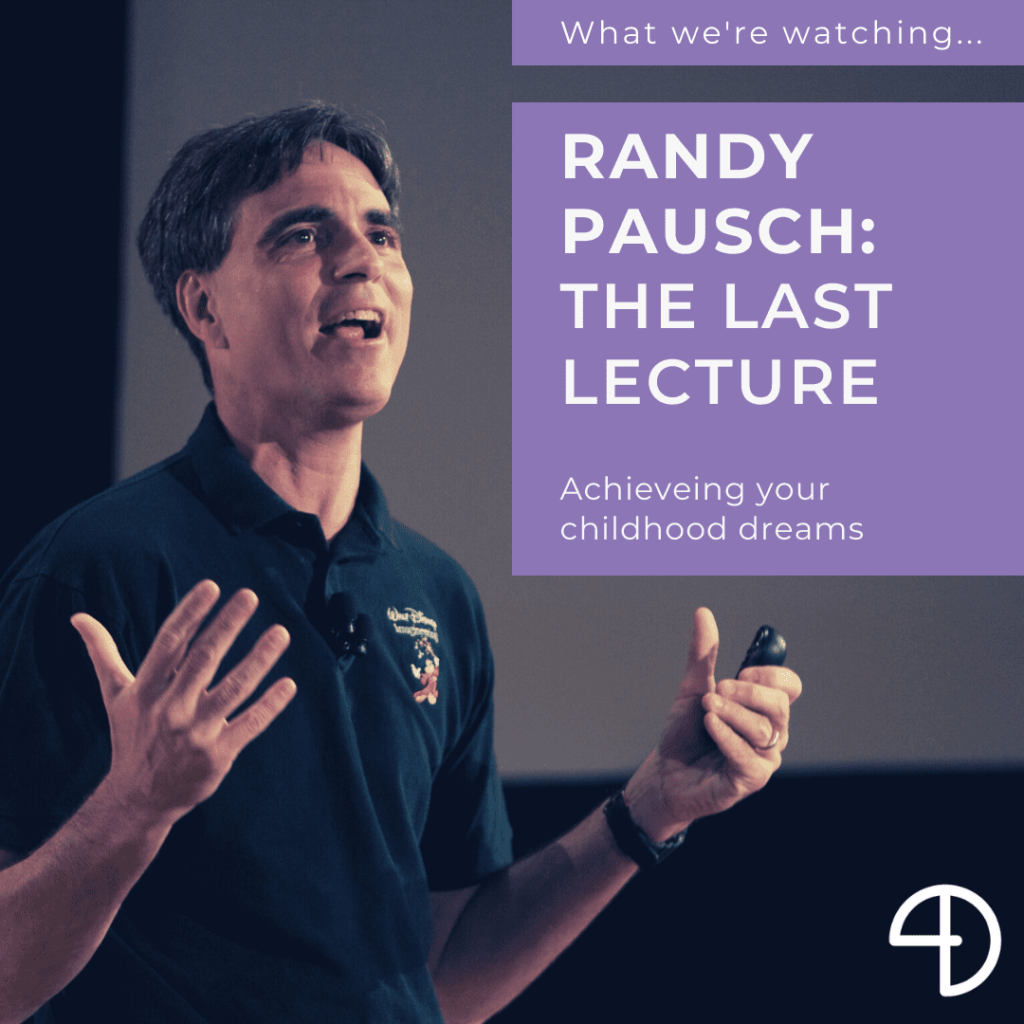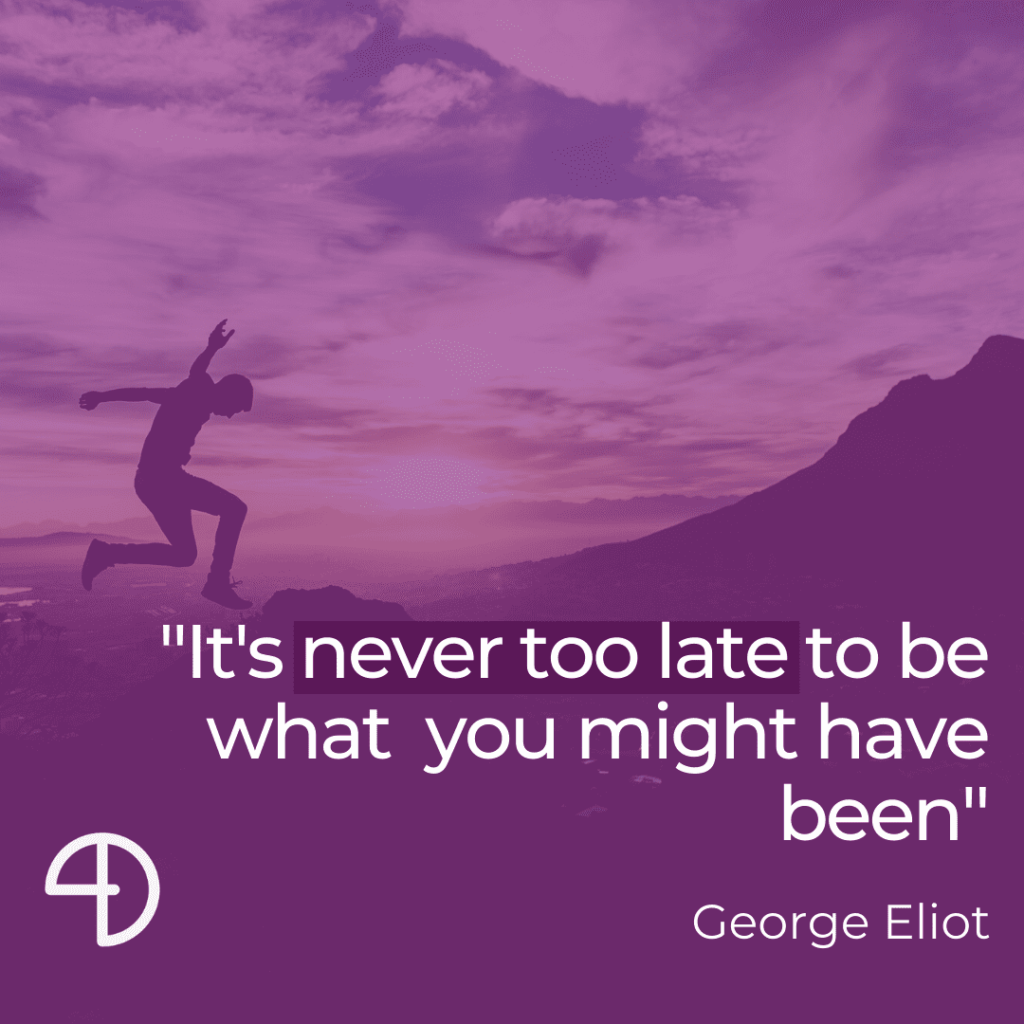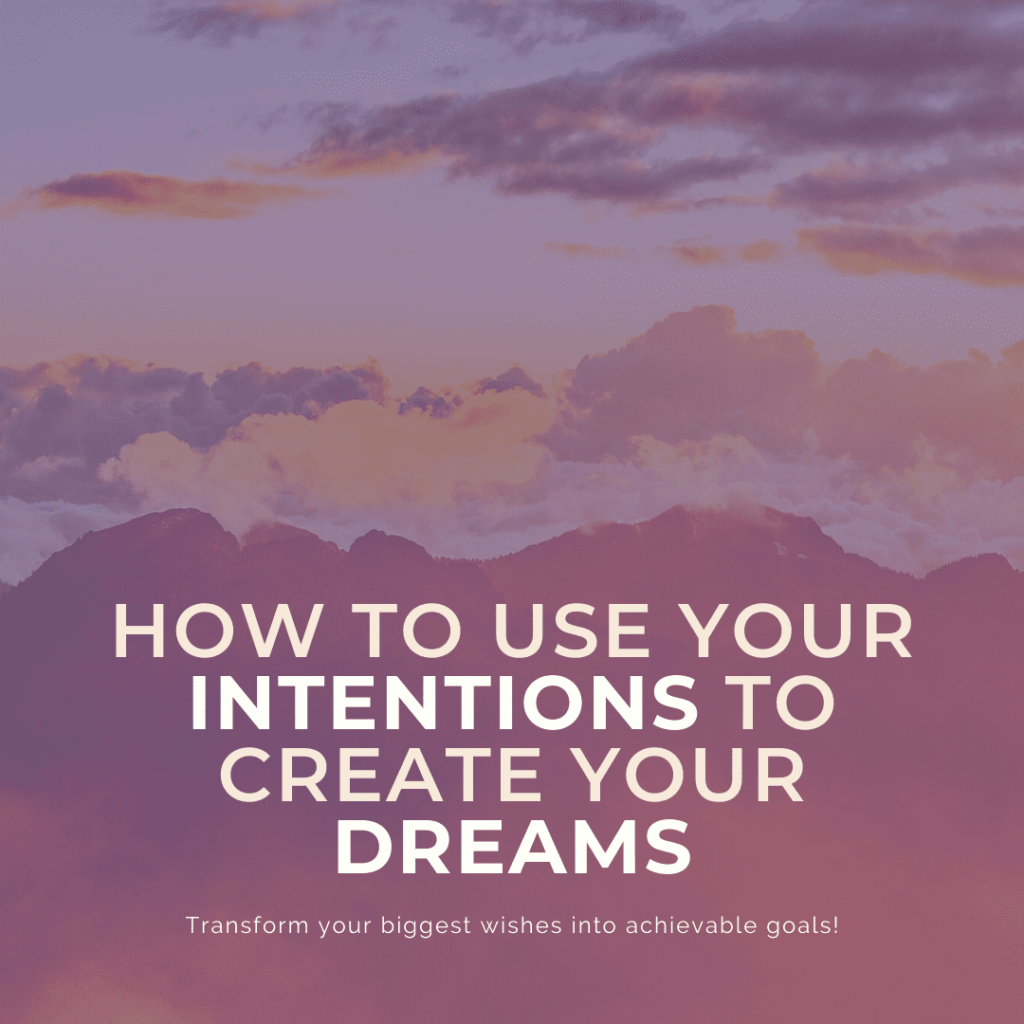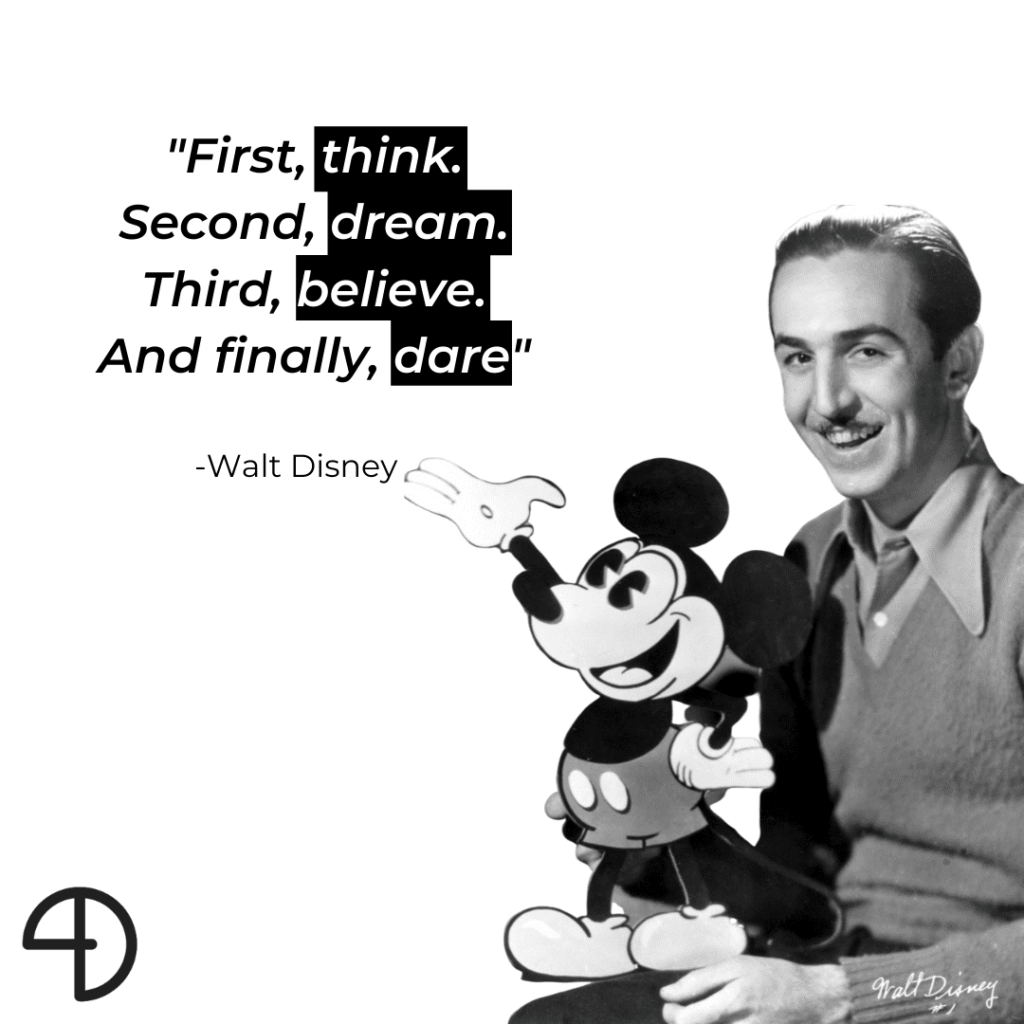Never stop dreaming.
Dreams are not a childish waste of time. It’s in our dreams that we plant the seeds of our future. Today, we’re matching the power of dreaming with the energy of intention, so that we can catch our dreams and turn our wildest fantasies into our reality.
In this article, we’re looking at how we might live from our dreams in lots of different ways. We may have some disappointed dreams. Perhaps your job, hobbies, house or social life might not look exactly like you dreamt at 10-years old (and that’s not necessarily a bad thing!) But are there parts of the dream or attitudes of the dreaming that you can bring into your adult life? In 2007 Randy Pausch delivered his “Last Lecture.” A month before giving the lecture Randy had received the prognosis that his pancreatic cancer was terminal. So Randy used his ‘last lecture’ as an opportunity to impart his final wisdom on the world. And what did the professor of computer science, human-computer interaction and design at Carnegie Mellon University choose to present on? “Achieving your childhood dreams.” In this surprisingly upbeat and light-hearted lecture, Randy talks about how you can still accomplish your childhood dreams and truly live your life to the fullest.
Join us as we look at ways we can reinvent our childhood dreams and bring an attitude of dreaming into our everyday interactions. To quote the American poet and philosopher Henry David Thoreau: “Our truest life is when we are in dreams awake.”
So…let’s get dreaming!

Distill your Dreams
You can still live from your childhood dreams. Because your dreams don’t have to look exactly as they did when you were growing up. Not if we deconstruct the dreams and capture the essence of the dreaming.
In ‘The Last Lecture’ Randy Pausch talks about his childhood dream of wanting to be an astronaut. However, as he got older he realised that it wasn’t blasting thousands of miles up into orbit that was the aspiration. Rather – the fun and fascination of floating in zero gravity was really at the very heart of his dream. What this distilling process left him with was the dream in its purest, simplest form. And this was a much more reachable dream that he could realise in many different ways.

So, how did Randy do it? Well as it turns out NASA has something called a vomit comet they use to train astronauts, which offers the experience of weightlessness for about 25 seconds. NASA offered a programme where college students could submit proposals to win a flight on the vomit comet. So, Randy got a team of his students together and they won. But unfortunately, Randy missed the T&Cs which stated that under no circumstances were faculty members allowed to fly with their students. Luckily there was another bit of small print stating that students were allowed to bring a local journalist with them…and just like that Randy retracted his application as a college professor and applied again as a web journalist accompanying the students and as a result accomplished his childhood dream of experiencing weightlessness!
Could you put some of your long-shot childhood fantasies through this distilling process and live from these dreams in different and perhaps more tangible ways? Distilling or deconstructing your childhood dreams can help you to uncover the essence of the dream and will give you clarity around what you really want. As Randy Pausch realised, he didn’t really want to live the life of an astronaut and spend months away from family and friends. What he wanted was to experience weightlessness. And that was a dream he managed to accomplish.
Let’s follow in Randy’s powerful footsteps and take a moment to deconstruct one of your childhood dreams. Perhaps you wanted to be a ballet dancer. What was it about that dream that you were specifically attracted to? Maybe it was the physical expression, the performance, the storytelling through movement. From here you can dig further still. What was it about the physical movement that made your heart sing? Maybe it was the flow, the symmetry or the precision. Keep going until you believe you’ve captured the essence of the dream. An essence that you can live from in lots of different ways. You may discover you can find a similar sense of flow or symmetry on the yoga mat. Or maybe you- like me- make your dream an important part of your personal life…

Build your hobbies into your dreams
Hands up, I have a fantasy of being on Strictly Come Dancing! 3 years ago, I started taking ballroom dancing lessons. And I immediately fell in love with the grace and flow of ballroom and the patterns and precision of the different dances. Yet the dream- to dance on Strictly- still sang in the background. And if we don’t chase our dreams, we will never catch them.
But what was it about the Strictly Dream that I longed for? The glamour, the dresses, the competition, the grace, the show. The whole thing. And all of those elements are things I can chase in my personal practice- without having to become a professional dancer. How? By entering an amateur ballroom competition. These kinds of competitions are totally accessible and represent a truly tangible way I can turn my hobby, something I love to do in my free time, into my dream. It doesn’t have to be our profession or a full-time job for it to be achievable. Not if we deconstruct the dreaming and look at other ways we can accomplish our dreams through our hobbies.

Put your goal out there and then rub out the fixed path because there are many routes to accomplishing a dream. Setting a goal doesn’t often give you a clear set of directions. What it gives you is much more powerful: it gives your internal compass a bearing and sets you off in the right direction. But there are still are many other paths along the way. Stay open and you might be surprised by which one leads you to your dream.
They say don’t judge a book by its cover. Well, the same applies to dreaming: don’t judge a dream by its title, as you’ll be undermining its depth and limiting opportunities to live from it in lots of different ways.
Dream Blockers
“Never give up on what you really want to do. The person with big dreams is more powerful than one with all the facts.”
– Albert Einstein
Can we dare to dream in spite of the potential set backs? Some of the past century’s most inspirational leaders were people who were told no, experienced great set-backs but dared to dream on anywhere. Martin Luther King is a perfect of example of someone who experienced dream blocks, yet continued to keep the dream alive by looking for ways around the dream block and towards the same end goal.
Many things can block our dreams. We don’t operate within a vacuum. We are always dealing with the 2 Contexts as we call them at 4D: our environment and shared culture. Our environment is all the tangibles, like the weather, and the country you live in. Our shared culture is other people. A lot of these things are out of our control. And they can have a big impact on our dreams. Maybe our families had different dreams for us? Or perhaps society’s version of success has impacted the career we chose?
So how do we push back out into the world when the world around us is blocking our dreams?
By waking up the 4th dimension: the intentional dimension. This is your best friend when it comes to dream enhancement. If you reach a road block to your dream, how might you find another way through, in order to reach the same end goal?
Activated Dreaming
“Dreams don’t work unless you do.”
– John C Maxwell, ‘The 21 Indispensable Qualities of a Leader’
Bringing your intentional dimension online is vital for achieving your dreams. However, living with intentionality isn’t simply about setting an intention and then sitting back and enjoying the show. Intentionality is something that impacts all of your other dimensions. It’s not simply something you say or do; it’s something that affects your whole being.

So, how can we activate our intentions in order to live with intentionality? We can start to match intention with action. Say for example you have a big dream to one day run a marathon. That’s the intention you’ve set yourself. To activate this dream, of course you’re going to have to start training! And as sports psychologists know, it is our intentional self that is going to make the difference as to whether our training is successful. Because, if the training feels physically hard, we may emotionally feel despondent, intellectually you may be telling yourself a story about being useless at running, and so perhaps you don’t push yourself as hard, so you feel disheartened and so the cycle continues. This will lead to an undermining of progress. And this unhelpful circle of feeling/thought/behaviour can appear in all areas of our lives and is why it is so important to keep our intentional dimension activated and online. Because of course when we’re tired, busy, despondent or stressed it’s all too easy to fall into our default ways of operating. And it’s our intentional dimension that keeps us motivated and our dreams on track.

Living with intentionality is the best way to fast-track your way to your dreams and help to keep you moving forward step by step in the direction of you dream. There is perhaps no better example of this than Walt Disney. He matched the magic of his dreams with the energy of intention and quite literally built his dreams into being- a reality I’m sure you’ve had the joy of exploring, whether that be via wandering the magic kingdom or watching a film. To quote the man himself: “First, think. Second, dream. Third, believe. And finally, dare.”
Dream Team
To use the wonderful words of John Lennon: “You may say I’m a dreamer, but I’m not the only one.” We all have dreams, however big or small. So how might the people around us help us with our dreams? And how might we help other people to achieve their dreams? Let’s use the power of dreaming and our ‘4D Dream Team Guide’ to help our team achieve even greater things…

Become who you want to become
“Life isn’t about finding yourself. Life is about creating yourself.”
– George Bernard Shaw
Dream dreams that are bigger than the things you could do. Dream about who you could be and step into a new way of being and experiencing the world. As Dan Pallotta says in his TED talk ‘The dream we haven’t dared to dream: “It’s time for us to dream in multiple dimensions simultaneously, and somewhere that transcends all of the wondrous things we can and will and must do lies the domain of all the unbelievable things we could be.”
Who do you want to be? For both yourself and also the people around you….
We used to think that the brain was fixed from around the age of 30. Over the past two decades, research into neuroplasticity has proven that this couldn’t be further from the truth. Yes, our brain’s change at a slower rate at 7-years old compared to when we are 77-years old. But our brains are still building and changing right into later life. And that’s exciting because the science tells us that as human beings, we’re not fixed but constantly evolving. So, the question we should all be asking ourselves is: what kind of human being do we dream of being?
What would be your dream story about you? Maybe it’s around being funny. So, what behaviours would help you to build a new belief system around comedy? Perhaps it’s as simple as learning a joke a day and sharing your favourite one in your bi-weekly team meeting. Or maybe you sign-up for an improvised comedy course and try out some spontaneous comedy. Step in to the dream of who you are and your beliefs about yourself will follow. Be the thing you want to be, with regards to your actions, words and thoughts, and step into a version of you that you’ve always dreamt of.

Dare to Dream
Our modern world stems from dreams – dreams turned into reality. So if we want to help shape the experience of ours and others lives, we have to value the dreaming stage in any project, decision or relationship. Never stop dreaming, because living with an attitude of activated dreaming can completely transform yours and others experience of life and inspire your teams, friends and family to think outside of the box and push through boundaries.
Of course, dreaming comes more easily to some of us than others. So if you’re someone who struggles with dreaming, try asking yourself these 4 questions in order to fire up your dream muscles, and you might notice how much richer your life becomes and how much bolder and braver you can be! You may find yourself surprised by the dreams that arise…
1. What do you want your days to consist of?
Take a moment to think about the things you love to do, the places you like to go and the people you enjoy being around.
2. Imagine your 8-year old self…What did they dream of?
And how might you bring elements of these childhood fantasies into your adult life?
3. Now imagine your 80-year old self…What did they dream would happen?
How much of their dream could you make come true? Now plan it!
4. And finally, if your life were a movie what character would you be?
What appeals to you about the character or story plot? And how might you bring parts of that character into your everyday life?
Your reality starts from the essence of your dreams and the dreams of those close to you, so start living from your dreams today – with your whole being- and watch as your fantasies turn into your reality. Remember “You gotta have a dream, if you don’t have a dream, How you gonna have a dream come true?” (South Pacific, “Happy Talk”).








